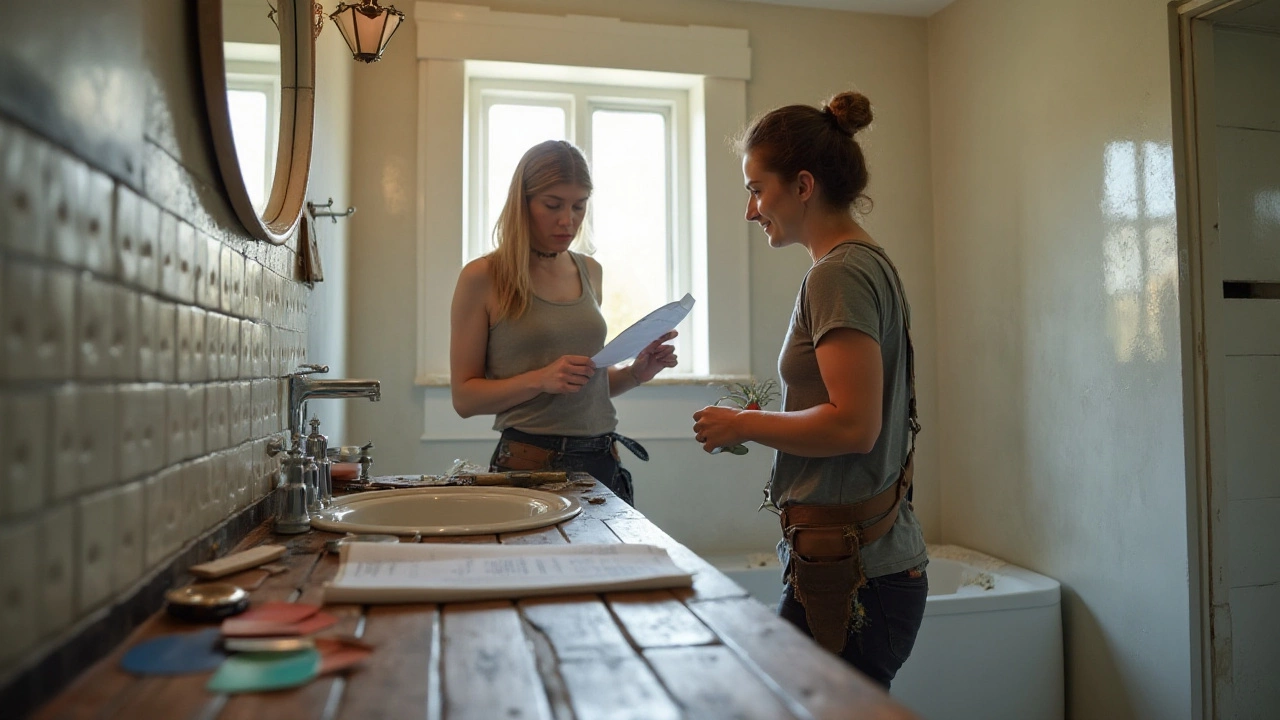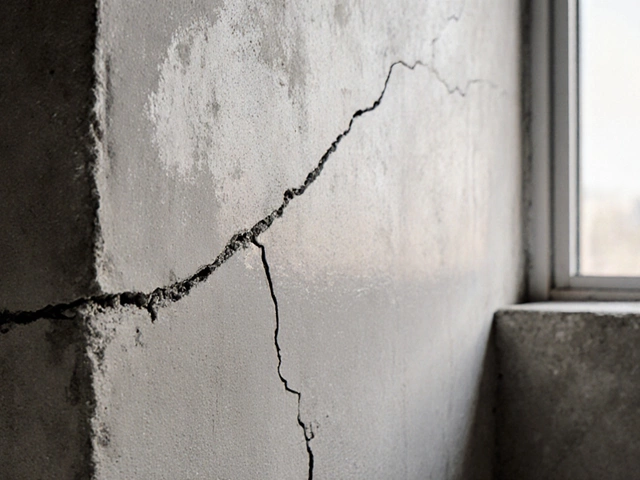Renovating a small bathroom seems like a straightforward task, but once you dive into the process, it reveals its complex tapestry of challenges and decisions. From selecting tiles to managing unexpected plumbing issues, you quickly realize that this petite space demands as much attention as a larger room. Understanding the timeline and scheduling is crucial to keeping stress levels low and ensuring that your daily routine isn't too interrupted.
Many factors influence how long a small bathroom renovation takes. These range from the extent of remodeling you're planning, the availability of materials, to the efficiency of your hired professionals. Let's unravel the elements collectively shaping this timeline, offering tips along the way to make the process as smooth as possible.
- Planning and Preparation
- Hiring the Right Professionals
- Construction Phase Breakdown
- Final Touches and Walkthrough
Planning and Preparation
Renovating a small bathroom starts long before the first tiles are removed or new fixtures are installed. It begins with meticulous planning and preparation, the cornerstone for a successful transformation. Start by assessing the current layout and functionality of your small bathroom. Consider what's working and what's not in your existing space. This stage might raise questions about whether to maintain the same layout or perhaps indulge in more radical changes like relocating the toilet or shower. These considerations will significantly impact your refurbishment timeline.
Creating a realistic budget is another critical early step. According to the National Kitchen and Bath Association, bathroom remodels can range widely in cost, depending on the scale and quality of materials chosen. Once you have a budget set, stick to it as much as possible to prevent unexpected expenses that could delay your project. Don't forget to allocate around 10-15% of this budget for unexpected issues that might arise during the renovation.
Design inspiration is an important part of the process. Gather ideas from magazines, online resources, or even through visits to home improvement stores. This helps you envision the style and look you desire for your new space. Mood boards or concept design sketches can be particularly useful tools for visualizing the final result and ensuring consistency throughout the project. Collaborate with a designer to refine your vision, ensuring it aligns with your budget and practical needs.
"A successful renovation is 40% planning, 20% design, and 40% execution," says home renovation expert Bob Vila. This underlines the importance of thorough preparation in ensuring the smooth flow of your bathroom renovation project.
The selection of materials and fixtures is another significant part of the planning phase. Choose durable materials that offer a good balance between aesthetics and practicality for a bathroom renovation. Consider current trends but balance them with timeless elements that won’t age rapidly. When selecting items like sinks, toilets, or bathtubs, always prioritize water efficiency, which can dramatically reduce utility bills and make your home more sustainable.
Before commencing any work, verify local regulations and acquire necessary permits for your renovation. Skipping this step can lead to legal complications, fines, and delays. Some jurisdictions have specific codes concerning plumbing, electrical work, and ventilation, which must be adhered to during remodeling. Consulting with local authorities or hiring a professional to tackle this aspect is often wise.
Scheduling your renovation timeline meticulously is crucial. A small bathroom renovation typically takes around 3 to 6 weeks, given there are no major hiccups. Create a detailed timeline from start to finish, breaking down each phase. This will not only provide a clear path forward but will help in tracking progress efficiently and ensuring each phase is completed in a timely manner.
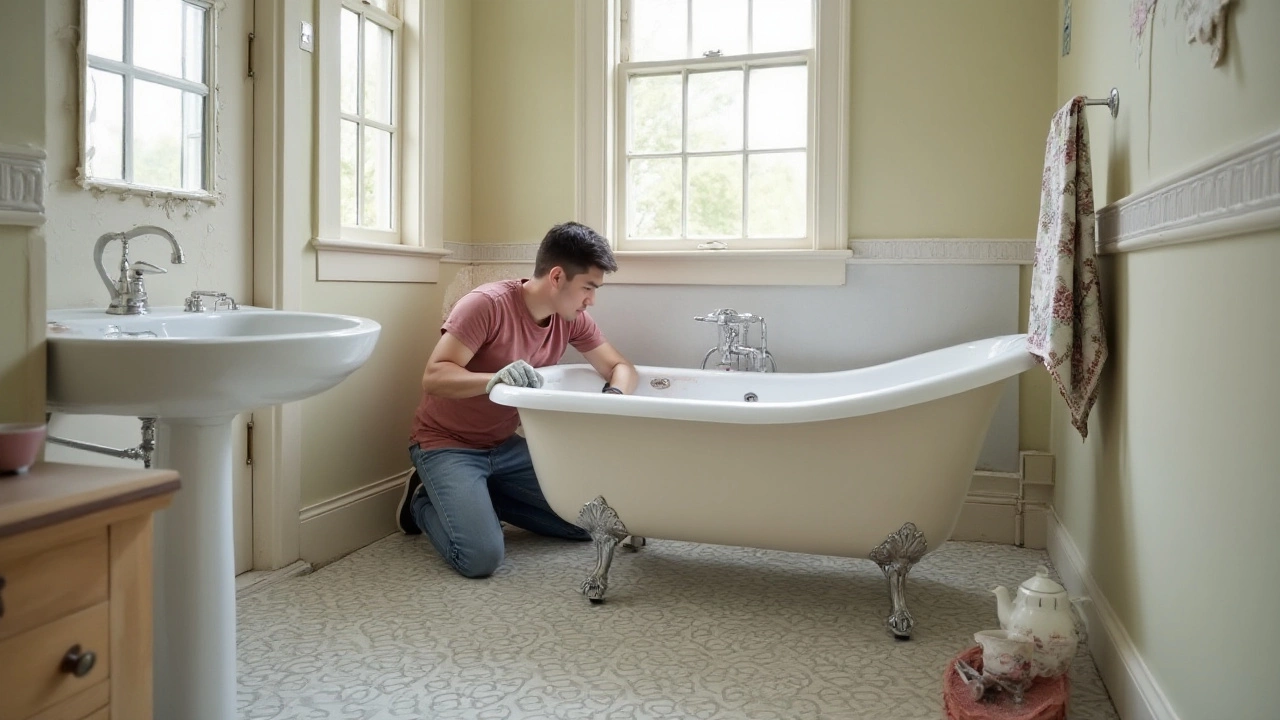
Hiring the Right Professionals
In the journey of a bathroom renovation, choosing the right professionals could be likened to selecting your travel companions for an expedition. The expertise and demeanor of these individuals could very well dictate the outcome and experience of your project. Now, kick-start your process with diligent research. You could start by seeking referrals from friends or searching online directories to find local contractors or designers with glowing reviews. This step is crucial as it reduces risks and puts your mind at ease knowing that your project is in capable hands. A professional with a robust portfolio and a trail of satisfied clientele is a promising candidate.
Once you shortlist a few professionals based on your research, proceed to set up meetings or interviews. During these interactions, gauge their communication skills—they should listen to your ideas while also offering valuable insights honed from their experience. Discuss timelines, budgets, and project scope thoroughly. Importantly, ensure they are licensed and insured, which protects both parties in the event of mishaps. As part of your discussions, ask them to outline a clear timetable for the renovation. It's essential to map out each phase of the remodeling to understand how the envisioned changes will unfold over the timeline.
A trustworthy professional will offer a detailed quote, including a breakdown of labor and material costs. This helps in avoiding hidden fees down the line. Sometimes, investing a little extra to work with a more experienced contractor can save you heaps of trouble later on. Experience is often invaluable, especially when faced with potential hiccups in your project. A seasoned pro will likely have encountered similar challenges before and can devise workaround solutions on the fly.
Small bathroom renovations can pose unique challenges, such as working within compact spaces, maneuvering around existing plumbing, and maximizing storage. It is the finesse and creativity of your chosen specialists that turn these challenges into opportunities for innovation. As
Houzz beautifully notes, "a bathroom reflects the soul of the home, and in its remodeling, the collaboration between homeowner and skilled craftsman brings that soul into new light." That seamless collaboration is key to a successful renovation.
Remember, signing a contract that includes all project details is non-negotiable. This becomes your safeguard if intentions were to ever be second-guessed. Additionally, contracts set clear expectations for deliverables, timeframes, and payment schedules. With these insights, trust fosters between you and your hired experts, paving the way for a small bathroom transformation that aligns with your vision.
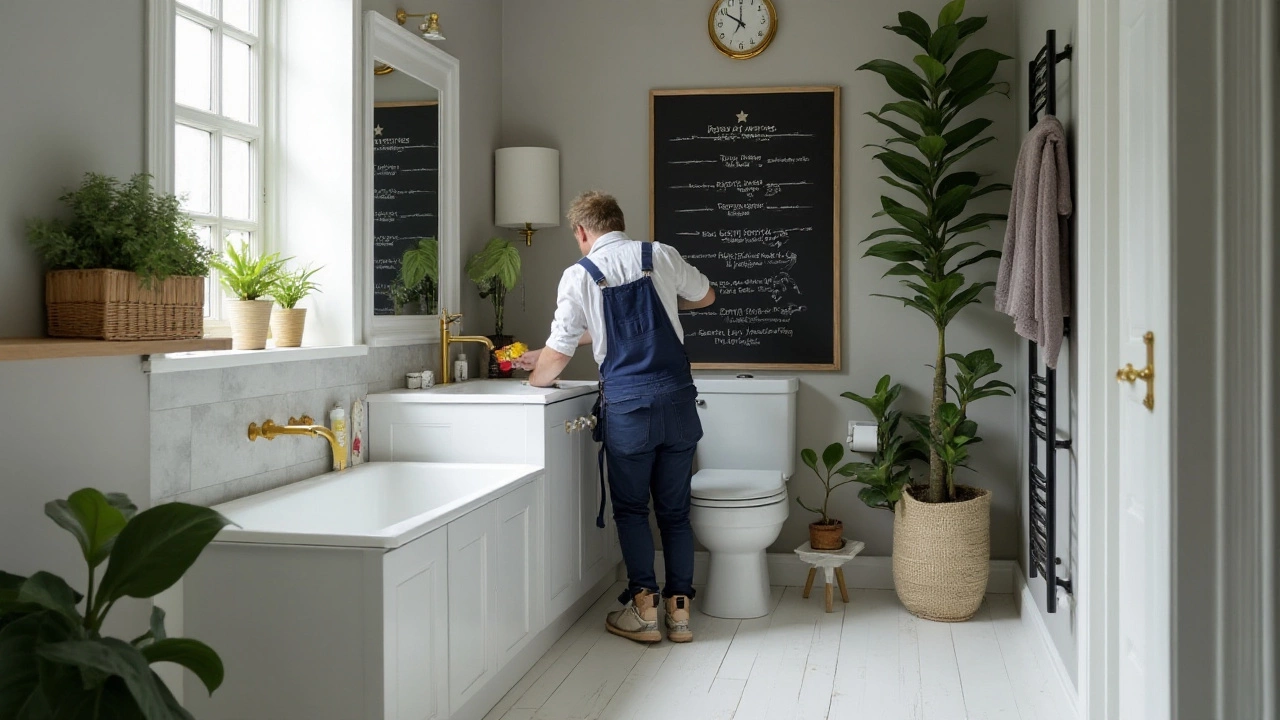
Construction Phase Breakdown
The construction phase of a bathroom renovation is truly the heart of the entire project. This stage is where plans transform into reality and it's where most of the hard work takes place. Typically, the construction phase can be broken down into several key activities, each playing a crucial role in achieving the final vision for your small bathroom. If your renovation involves any major structural changes, such as moving walls or adjusting plumbing, this is where those tasks will be tackled. The duration of this phase can range anywhere from a few weeks to a couple of months, depending on the complexity of the work and the efficiency of your contractors.
A key component of this phase involves demolition, which clears out the old fixtures, tiles, and cabinetry to make way for the new. This is typically a noisy and messy affair that requires careful planning and execution to ensure no damage is done to adjoining rooms or floors. Once demolition is complete, the next major task is updating the plumbing and electrical systems, ensuring they meet modern standards and can support any new appliances or fixtures being installed. It's an intricate dance, often involving coordination among multiple tradespeople.
According to a 2023 survey by the National Association of Home Builders, the average bathroom renovation project allocates roughly 30% of its time to addressing necessary plumbing and electrical work. That's a significant chunk that underscores the importance of having experienced professionals on your team. During this time, any custom cabinetry or specialty items that have been ordered will begin to arrive and be installed.
"Good design is making something intelligible and memorable. Great design is making something memorable and meaningful." — Dieter Rams
The installation of new surfaces follows, including flooring, wall tiles, and backsplashes. These elements set the aesthetic tone for the room, so care is taken to ensure tiles are laid properly and aligned to perfection. If you've chosen to replace your bathroom with a large piece like a freestanding tub or custom shower unit, this installation process will also occur at this stage. With these critical components in place, contractors then proceed with installing accessories like lighting fixtures, mirrors, and shelving—small details that collectively create a polished look.
Finally, a typical construction phase involves thorough inspection points to ensure every detail aligns with the project specifications and quality standards. An organized contractor will have a checklist to ensure all elements are accounted for—from grout consistency to plumbing line integrity. By maintaining a transparent communication line with your contractor, unexpected delays can be proactively managed. Designing your small bathroom is a journey that, when properly navigated during the construction phase, leaves you not only satisfied with the outcome but also appreciative of the meticulous process that brings it all together.
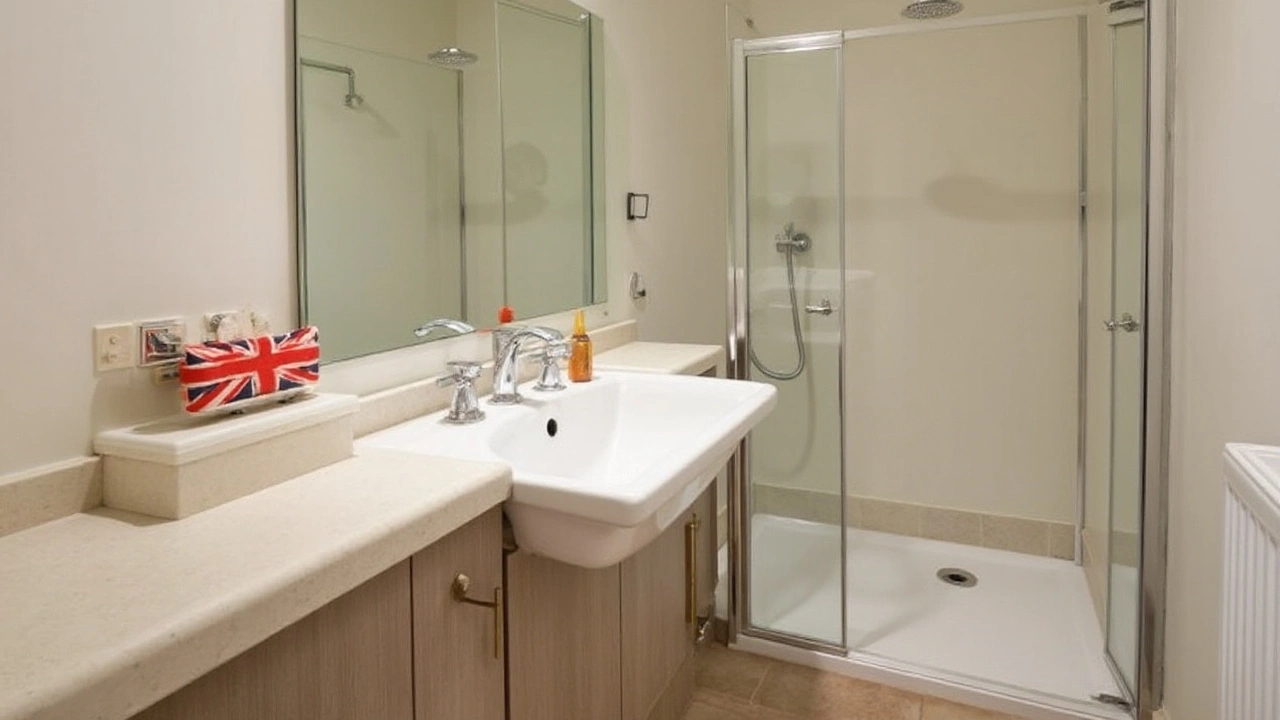
Final Touches and Walkthrough
As the dust settles from the construction phase, the time arrives to add those final touches to your small bathroom renovation. These details are what transform an emerging space into a completed room, elevating it from functional to truly inviting. Begin by focusing on the fixtures. Whether you've opted for sleek modern taps or vintage handles, paying attention to their placement and use can make a significant difference. Ensure each fixture is securely installed and functioning properly—check for any leaks, drips, or wobbles. The last thing you need is an issue down the line because of a rushed installation.
Next, consider the paint or the wallpaper. Neutral tones can make a small space feel larger, while a splash of color might add personality and warmth. Either way, ensure the finishes are consistent and smooth, with no drips or uneven patches. The small details such as grout lines and caulk seals not only add to the aesthetic but prevent moisture damage. Carolyn Forte, a renowned expert in home cleaning and improvement from the Good Housekeeping Institute, suggests using a sealant that matches your tiles for a seamless appearance.
"Don't underestimate the power of a good caulk; smooth lines can lend polish and durability to your renovation," Forte notes.
Once the aesthetics are in place, it's time for a detailed walkthrough. This step is more important than many realize, as it's crucial to test every facet of the renovation process. Begin with a checklist, noting everything from lighting and fan mechanisms to drawer slides and mirror clarity. During this walkthrough, scrutinize the space as a user rather than a critic. Turn on the shower to verify water pressure and temperature consistency, switch the lights on and off multiple times to ensure proper wiring, and open and close all storage solutions to check for ease of use.
For those who love statistics, a study by the National Kitchen and Bath Association reveals that meticulous attention to final touches significantly enhances the homeowner's satisfaction and perceived value of the renovation. Incorporating pleasing scents or adding a touch of greenery with moisture-loving plants can also enhance the atmosphere. Don’t forget those simple yet effective finishing touches like new, plush towels or chic soap dispensers that resonate with the chosen style.
As you wrap up, encourage feedback from anyone who may share or use the space. Honest opinions can highlight areas you might have overlooked. A successful small bathroom renovation not only ends with a beautiful space that operates efficiently but also provides a room that everyone can enjoy. Celebrating these final touches is not just about completion but reflects the hard work and thoughtful decisions made throughout the project.
